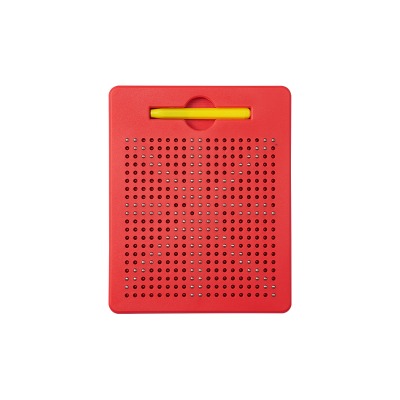Color Magnetic Stick And Buck Ball Set, Educational Decompression And Multi-Shape Building Block Toy
The Color Magnetic Stick and Bucky Ball Set is a versatile and engaging educational toy designed to enhance spatial imag...
See Details
In recent years, technological alternatives to traditional drawing tools have grown in popularity. One such option is the Magnetic Drawing Pad, a device that allows users to create images using a magnetic stylus on a reusable surface. While it offers convenience and novelty, the question arises: can a magnetic drawing pad truly replace paper drawing?
Convenience and Reusability
One of the most apparent advantages of a magnetic drawing pad is its convenience. Unlike paper, which can be used only once before being discarded, a magnetic drawing pad allows drawings to be erased and recreated countless times. This reusability makes it ideal for children, casual doodlers, or anyone experimenting with ideas without worrying about wasting paper. Additionally, the compact and lightweight nature of these pads makes them easy to carry, which can encourage drawing on the go.
While traditional paper may require a stack of sheets for extensive sketches, a magnetic drawing pad condenses that need into a single device. This aspect not only reduces clutter but also provides a practical solution for practice sessions, brainstorming, or learning basic drawing techniques.
Limitations in Artistic Expression
Despite its convenience, a magnetic drawing pad has limitations that can affect artistic expression. Paper allows for a variety of tools such as pencils, markers, watercolors, or charcoal, each offering unique textures, shades, and effects. In contrast, a magnetic drawing pad generally provides one uniform drawing style, restricting shading, blending, or color variation. For artists seeking depth and detail, these limitations can make paper drawing difficult to fully replace.
Moreover, the tactile experience of drawing on paper differs significantly from using a magnetic surface. The feedback of pencil on paper, the resistance, and the ability to layer strokes are part of what shapes an artist's skill. A magnetic drawing pad, while engaging, cannot fully replicate these nuances.
Environmental and Educational Considerations
On the environmental side, magnetic drawing pads can reduce paper consumption, which is a notable benefit for households and classrooms aiming to lower waste. Children can practice writing, drawing, and creativity repeatedly without generating piles of used paper. Educationally, these devices can be engaging tools that encourage experimentation and problem-solving, making them suitable for early learning environments.
However, educators and parents may notice that over-reliance on digital or magnetic surfaces can limit exposure to traditional fine motor skills development. Writing, sketching, and erasing on paper involve hand coordination and pressure control, which remain valuable skills beyond the digital age.
Balancing Use and Choice
Ultimately, whether a magnetic drawing pad can replace paper drawing depends on the purpose. For casual sketches, practice exercises, or reducing waste, a magnetic drawing pad provides a practical alternative. For detailed art, professional illustration, or projects requiring various media, paper still plays an essential role. Many artists and learners find that combining both methods allows them to enjoy the benefits of reusability while still developing skills on traditional surfaces.
A Magnetic Drawing Pad offers convenience, reusability, and educational value, but it cannot entirely replace paper drawing. The choice between the two should reflect the user's goals, whether they prioritize experimentation, portability, or artistic depth. Rather than seeing one as a complete replacement for the other, recognizing their complementary strengths can lead to a more versatile and sustainable approach to drawing.